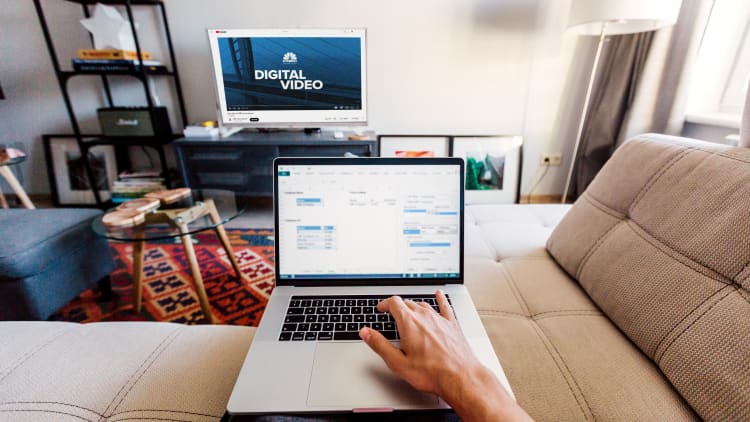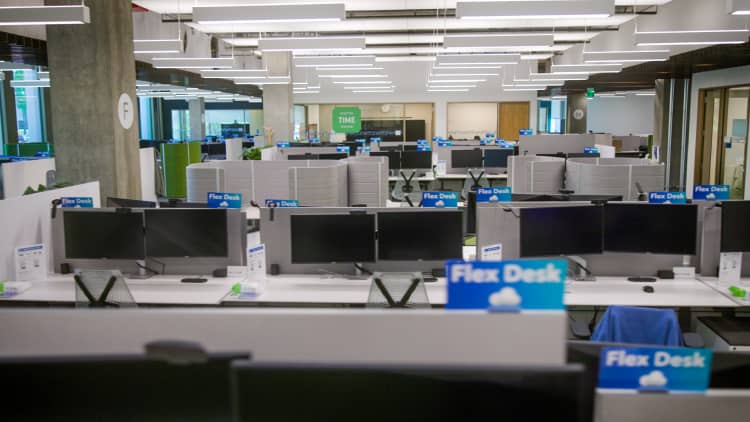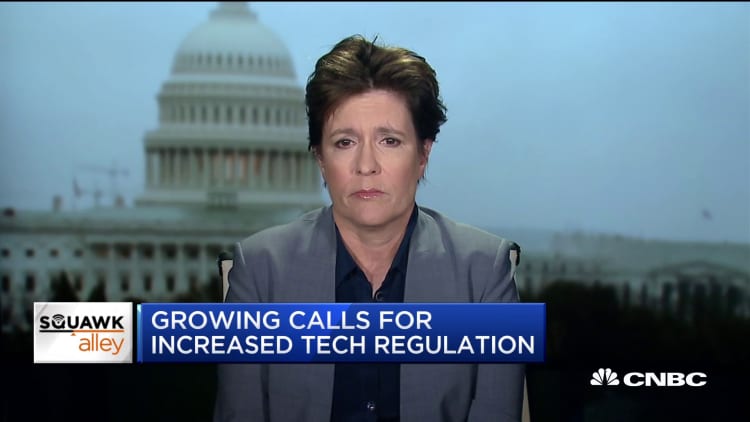

When Arjun Sharma noticed that employee monitoring tool Time Doctor was installed on his company laptop, he didn’t think much of it.
“You would sign into work, it’s like clocking in and clocking out. So you would sign in at like 9 a.m. and pretty much just click start on the software,” he told CNBC Make It.
“I didn’t really know how much it was tracking and how much.”
But all that changed when his manager started bringing up “productivity reports” in one-on-one meetings.
[Employee surveillance] has increased excessively over the last few years … largely under the guise of ensuring workplace safety and confidentiality and protecting the business.
Kathryn Weaver
Partner, Seyfarth
“There’ll be statistics like, you were idle for, like, X amount of time — these were times [when] I wasn’t actually working,” said the 26-year-old software engineer, who works remotely.
“When [I told them it’s because] I finished the task early and they’re like, you should be working on something else.”
Micromanagers have long existed in workplaces. But the normalization of working from home and hybrid arrangements since the pandemic has fueled what Microsoft calls “productivity paranoia.”

In fact, with the shift to hybrid work, 85% of leaders have trouble believing their workers are being productive.
It therefore comes as no surprise that demand for employee monitoring software has skyrocketed since the pandemic. According to one report, searches for employee monitoring software rose by 75% in March 2020 compared with the 2019 monthly average, and demand remained strong in 2021 and 2022.
“It is definitely not new — there’s been surveillance since the beginning of the Industrial Revolution, there were punch cards for people to come in and out of factories,” said Kathryn Weaver, a partner at law firm Seyfarth.
“But that has increased excessively over the last few years … largely under the guise of ensuring workplace safety and confidentiality and protecting the business,” Weaver added.
What employers can see
Most types of employee monitoring software in the market now make it possible for users to see everything on a desktop in real-time — from keystrokes, browsing activity, emails, chat apps.
A report from ExpressVPN found that close to 80% of employers use monitoring software to track employee performance and online activity.
Some managers (73%) have taken it even further — storing recordings of staff calls, emails or messages to evaluate their employees’ performance.
Veriato is one of many employee monitoring software companies worldwide whose sales boomed because of the pandemic.
“In 2022, we saw 100% growth across the Asia Pacific region,” said Elizabeth Harz, Veriato’s CEO.
One of Veriato’s latest features makes use of “psycholinguistics” to help employers figure out if workers are satisfied at work — through their use of language.
For example, keywords such as “interview,” and job search sites such as “indeed.com” will send alerts to employers when used.
Rejoy Radhakrishnan, Veriato’s regional sales manager for the Middle East and Asia-Pacific, said the feature can be used by employers in a “very positive way.”
“It’s always good for the employer to know if the employee is looking for a job, so that they can understand if … maybe [employees] are not happy with something, so they can have a candid discussion with them.”
Potential to backfire
Employee monitoring tools aren’t just for monitoring employees — they can also increase a company’s online security and reduce the risk of data breaches.
During the pandemic, employee identity theft and other fraudulent activities were on the rise, thanks to security gaps that came with the introduction of work-from-home initiatives.
“Previously, the edge of the network was very defined within a building, but now you have employees all over the place,” Harz said.
“Part of that contract between the employee and the business is, ‘I’m going to take a corporate device … to a personal location.'”
If the intent of surveillance is to control, to make sure that my employee is seated for X number of hours at a desk … then the entire basis of remote working is lost.
Jaya Dass
Managing director, Randstad Singapore and Malaysia
That’s why “a lot of employees” understand that flexibility comes at a price — since employers know what workers are doing on their work devices, Harz added.
But not all employees have come to terms with the perceived trade-off. ExpressVPN’s research also showed that those who know they’re being watched report feeling more anxiety and pressure to work longer hours.
A 2021 study showed that employee monitoring has a lot of potential to backfire — monitored employees were substantially more likely to take unapproved breaks and purposely work at a slow pace.
Sharma, for example, said that he “hated” having a monitoring tool on his laptop.
“[Employee monitoring software] does kind of help in being more productive. But at the same time, it’s also counterintuitive, because what I would do is make my tasks longer to fill in the time, rather than just do it,” he said.
“I was like, why do it as fast as I can because no matter what, they’re still tracking me for a certain amount of time.”

Jaya Dass, Randstad’s managing director for Singapore and Malaysia, said employee monitoring software of any kind is a “breach of trust and personal privacy.”
“If the intent of surveillance is to control, to make sure that my employee is seated for X number of hours at a desk … then the entire basis of remote working is lost,” she said.
“That is observing the human being as a commodity. You’re not managing the emotional and the mental state of the employee, which is actually the real essence behind productivity engagement.”
What you can do
In most jurisdictions, it’s legal to monitor work devices — as long as employees give their consent.
“For example, the EU’s General Data Protection Regulation … as long as you’re providing notice, and you’ve explained the reasons why you’re doing it, then quite often that can be sufficient,” Weaver said.
However, employees are often unaware that they have consented to surveillance in their work contracts.
“Employee surveillance will often be something that’s referenced in the middle of an employment contract … it won’t necessarily be expressly pointed out with a big red finger,” Weaver said.
When you’re looking at your contract, you’re not looking for those clauses — you’re looking at how much am I going to get paid? What benefits do I have? You will probably skip over sections to do with data privacy because they’re not important to you at that point in time.
Kathryn Weaver
Partner, Seyfarth
She added that in employment contracts, there will typically be a provision that explains the employer has the right to monitor anything from emails to phone calls, but the purposes “will be very broad.”
“When you’re looking at your contract, you’re not looking for those clauses — you’re looking at how much am I going to get paid? What benefits do I have? You will probably skip over sections to do with data privacy because they’re not important to you at that point in time.”
Those who’re already in a job and who want to know the extent of surveillance may find it useful to know that there are various jurisdictions that give employees the right to make a “data access request.”
“The employer in that context would then have to look into all personal data held by the employer around that employee … put that together and provide that to the employee,” Weaver said.

And there are ways to beat employers at their own game. Sharma for example, created a software called Lazy Work, which claims it mimics human activity online. He’s currently selling the service as a subscription for $6 a month.
The software, which was launched in November 2022, has 125 subscribers so far.
“It takes control of your keyboard and your mouse. And it seems like a real human is interacting with the computer, but nothing is really being done,” said Sharma, who is selling the service as a subscription for $6 a month.
But he told CNBC that his software doesn’t encourage workers to be lazy, despite its name.
“At the end of the day, if you don’t do the work, and even if you use this tool, the work isn’t completed,” he added.
“This is just to give you that buffer time [if you] want to take a break or if you feel like you’ve done enough for today.”
Don’t miss: Young people in Greater China are blowing their paychecks every month — even if they don’t have to
Like this story? Subscribe to CNBC Make It on YouTube!
